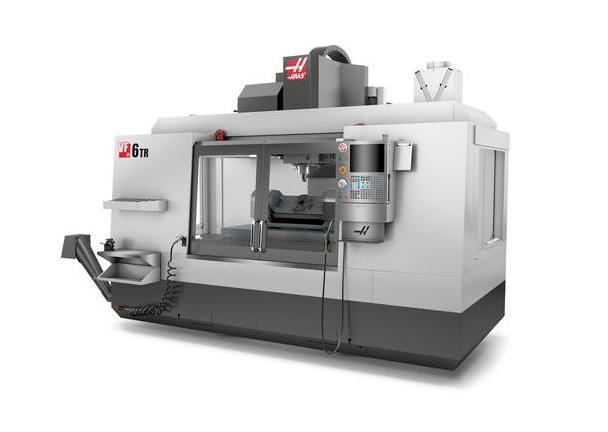5-Axis CNC Machining is a subtractive manufacturing process that employs computer numerical control to guide a cutting tool along five axes. This enables the creation of complex, three-dimensional shapes that are difficult or impossible to manufacture using traditional machining methods. The ability to move the tool along five axes allows for more precise control of the cutting process, resulting in parts with tighter tolerances and smoother surfaces. The ability to machine parts from multiple angles can result in shorter machining times and higher productivity. While 5-axis CNC machining has clear advantages in terms of complexity, precision, and efficiency, it costs more than other methods.

Factors Affecting Cost of 5-Axis CNC Machining
Factor 1: Part Complexity
Intricate shapes and features necessitate longer machining times and more complex toolpaths, raising 5-axis costs. Complex parts frequently necessitate intricate toolpaths and additional machining operations, resulting in longer overall machining time. This translates directly into higher costs for machine hours, energy consumption, and tool wear. Producing complex geometries necessitates more sophisticated toolpath programming, taking into account multiple axes and potential collisions.
Factor 2: Material
Harder materials necessitate specialized tools and slower cutting speeds. This increases tool wear and machining time, driving up the cost of 5-axis CNC machining. Brittle materials, such as ceramics or cast iron, necessitate careful tool selection and machining strategies to avoid breakage, which increases complexity and cost. Machining features: Materials with good machinability allow for faster cutting speeds and smoother finishes, which reduce costs.
Factor 3: Volume
Unlike some simpler production methods, 5-axis CNC machining has several inherent fixed costs that do not change depending on how many parts are produced. Programming and configuring the machine for each specific part design requires time and expertise. Specialized tools are frequently required for 5-axis machining, and they can be costly to purchase and maintain. Creating the complex CAM program for the 5-axis machine necessitates skilled programmers and specialized software. Low-volume production increases setup costs for the 5-axis, raising its relative cost.

Factor 4: Machine and Tooling
5-axis machines are fundamentally more complex than their 3-axis counterparts. They require additional motors, encoders, and control systems to coordinate movement across five axes. This complexity significantly raises the initial purchase and maintenance costs when compared to simpler 3-axis machines. The unique 5-axis movement necessitates specialized tooling that can function and withstand the complex motions. These tools frequently necessitate intricate geometries and more durable materials to withstand the additional stress and angles. This specialized nature typically results in higher tool costs than standard 3-axis tooling.
Factor 5: Programming
The specialized CAM software required for 5-axis programming can be more expensive than standard 3-axis software, increasing the overall cost. Hiring or training programmers with the necessary skills and experience increases labor costs when compared to simple 3-axis programming. Because of the complexity, additional time and effort may be required for program testing and iteration to ensure accuracy and efficiency, adding to the cost.

Cost Advantages of 5-Axis CNC Machining Compared to Other Methods
| 5-Axis CNC Machining | 3-Axis CNC Machining | Traditional Machining | |
| Setup time | Reduced setup time due to simultaneous machining from multiple angles. | Longer setup time is required for each machining operation. | Multiple setups are required for complex parts. |
| Machining time | Shorter machining time due to faster cutting speeds and fewer operations. | Longer machining time due to slower cutting speeds and multiple operations. | Long machining times due to manual operations. |
| Accuracy | Higher accuracy and precision due to multi-axis control. | Lower accuracy and precision, especially for complex geometries. | Lower accuracy and precision compared to CNC machining. |
| Labor costs | Lower labor costs due to automation and fewer manual operations. | Higher labor costs due to manual setup and operation. | High labor costs due to extensive manual work. |
| Scrap rate | Reduced scrap rate due to higher accuracy and fewer errors. | Higher scrap rate due to lower accuracy and multiple setups. | High scrap rate due to manual operations. |
| Lead time | Shorter lead time due to faster production times. | Longer lead time due to longer machining and setup times. | Long lead times due to manual processes. |
| Flexibility | Higher flexibility to produce complex parts with intricate features. | Lower flexibility for complex parts, limited to simpler geometries. | Limited flexibility for complex parts, requires custom tooling. |
| Best suited for | Complex, high-precision parts, low-volume production of complex parts, and applications where reduced lead time is crucial. | Simple parts with basic geometries, high-volume production of simple parts. | Simple parts with basic geometries, low-volume production, or when cost is the primary concern. |

Conclusion
5-axis CNC machining is not always the most cost-effective option, but it does provide significant benefits in terms of efficiency, accuracy, and part complexity. The cost comparison is heavily dependent on the specific part design, material, production volume, and desired quality. Consult with a qualified machining service provider to determine the most cost-effective method for your specific requirements. Remember that cost is not the only factor to consider. Evaluate the trade-offs between cost, efficiency, accuracy, and lead time to make the best decision for your project.










